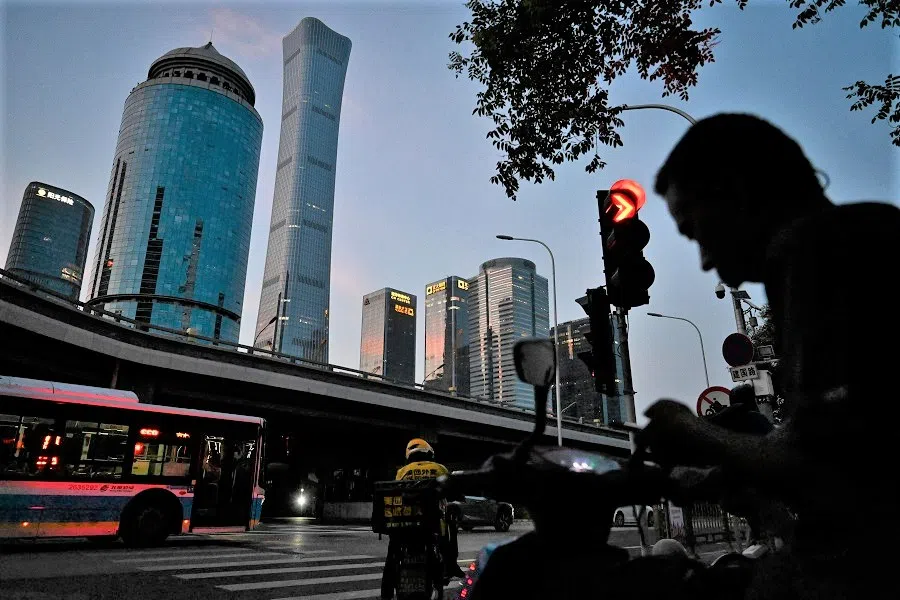Germany's new China strategy: A drastic change
Germany's newly unveiled "Strategy on China" echoed much of EU language in highlighting risks concerning competitiveness, supply chain resilience, national security and values in its recalibrated approach to China. While a de-risking strategy carries difficult trade-offs, there seems to be a broad consensus on the goals Germany wants to achieve.

In December 2020, the European Union (EU) and the People's Republic of China (PRC) reached a "general agreement" on a new Comprehensive Agreement on Investment (CAI). Ratification talks were later frozen, but if ratified, the CAI would contribute to the further deepening of economic ties. The driving force behind the breakthrough in the negotiations on the European side at the time was then German Chancellor Angela Merkel.
Less than three years later, the relations between the PRC and Germany could hardly be more different. Instead of economic engagement, the reduction of risks stemming from economic cooperation is at the heart of Germany's first China strategy adopted in mid-July by the German government.
Mitigating complex and diverse risks
In its Strategy on China (Strategy) document, Germany identifies not only value differences as a source of systemic rivalry but also claims that the Chinese party-state puts its own interests above the principles of the rules-based order. Most prominently, the German government discusses at least four types of risks arising from deep economic interaction.
Market dependencies and concerns about Germany's competitiveness stand next to concerns over import dependencies and threats to supply chain resilience. National security considerations as well as challenges arising from a difference in values are further examples of risks that shape the Strategy.
... the German government calls on companies to consider the geopolitical risks of their "China exposure". In the future, firms will need to bear the financial liability if their China business suffers from geopolitical disruptions.

To mitigate such complex and diverse risks, the Strategy rightly stresses the need for all stakeholders to adapt to the new realities. Notably, the German government calls on companies to consider the geopolitical risks of their "China exposure". In the future, firms will need to bear the financial liability if their China business suffers from geopolitical disruptions. Export and investment guarantees will be capped and bound to stricter conditions.
A tightening of Germany's inbound investment screening mechanism is imminent. And even outbound investment screening, widely believed to be a contentious issue within the German government and across Europe, is characterised as a tool that could be helpful. The Strategy promises that Germany will constructively contribute to a European assessment of the tool. In addition to such defensive tools, the Strategy identifies trade facilitation as a core instrument to enable diversification.
Why has Germany's stance on China changed so drastically within a short period?
Seeing China differently
Granted, Germany can be described as a latecomer within the West. The relations between the US and China have deteriorated throughout the Trump presidency. Already in 2019, the EU characterised China not only as a "partner" but simultaneously as a "competitor" and a "systemic rival". Now, Germany has also adopted the EU's terminology. But four sets of developments corresponding to the four risks outlined above - competitiveness, supply chain resilience, national security and values - have particularly contributed to the ongoing realignment of Germany's China policy:
First, with regard to competitiveness, plunging market shares of Germany's car industry due to the transformation to e-mobility have raised concerns about German competitiveness, highlighting the need to strengthen Europe as a business location. The rather slow recovery of China's economy after the end of the country's zero-Covid policy, as well as China's structural economic challenges, further raise questions about whether the PRC is primarily a sales market opportunity as it used to be.
The risk of an escalation in the Taiwan Strait made many ask whether Germany should internalise such risks and diversify now rather than ignore risks as the country has done with regard to Russia.

Second, the Covid-19 pandemic has heightened the awareness of supply chain disruptions of critical goods such as medical equipment and semiconductors. A globalised economy that is purely focused on cost efficiency carries risks. Chinese "face mask-diplomacy" irritated many political elites in Germany because the PRC strived to utilise supply chain bottlenecks to improve its own image.
Third, this was coupled with growing concerns of economic coercion due to value differences. The opening of a "Taiwanese Representative Office" in Lithuania led not only to economic coercion against the Baltic country but also European companies with business ties to Lithuania. A group of institutions and individuals, including European parliamentarians, became the subject of Chinese sanctions in reaction to EU measures targeting human rights violations in Xinjiang.
Fourth, China's (limited) support for Russia's war of aggression against Ukraine emphasised risks to national security. Geopolitical tensions can result in military conflict and economic decoupling despite its enormous economic costs. The protection of critical infrastructure, already a subject of discussion before the war, got additional attention. The risk of an escalation in the Taiwan Strait made many ask whether Germany should internalise such risks and diversify now rather than ignore risks as the country has done with regard to Russia.
... its member states continue to pursue rather uncoordinated bilateral relations with the PRC. The German China Strategy hardly offers new ideas to tackle this shortcoming.
Broad consensus among German political elite
In the Strategy, Germany acknowledges that it cannot tackle these risks alone. Germany puts the EU at the heart of its considerations. Accordingly, many of the policy instruments mentioned in the Strategy mirror the European Economic Security Strategy put forward by the European Commission a few weeks earlier. At the same time, however, Germany does not provide any concrete new impulses to the European policy agenda. While the EU has reached a remarkable degree of unity in its China policy at the EU level, its member states continue to pursue rather uncoordinated bilateral relations with the PRC. The German China Strategy hardly offers new ideas to tackle this shortcoming.

Unlike the EU's Strategic Outlook of 2019, the German Strategy also does not contain any concrete actionable policies that the government promises to implement until the end of the legislative term. This raises the question of the Strategy's implementation. While many observers believe that existing divisions within the German government could be hurdles to its implementation, this perspective might underestimate the level of agreement among the German political elite.
... if one compares a leaked draft version of the Strategy from November 2022 that reflected the position of the Foreign Office to the final version, one might be surprised that the general tone of the document has not changed.
No doubt, a de-risking strategy carries difficult trade-offs. How fast, at what cost and to what degree Germany should tackle existing risks indeed remains subject to controversy within the government. However, if one compares a leaked draft version of the Strategy from November 2022 that reflected the position of the Foreign Office to the final version, one might be surprised that the general tone of the document has not changed. This reflects the broad consensus of the goals Germany strives to achieve.
A successful implementation of the Strategy will require financial resources and an honest societal discussion of the costs that new geopolitical risks carry for society. This remains an uphill battle for the German political elite. But it is very unlikely that the days of economic engagement that inspired the CAI negotiations will return any time soon.

![[Big read] Paying for pleasure: Chinese women indulge in handsome male hosts](https://cassette.sphdigital.com.sg/image/thinkchina/c2cf352c4d2ed7e9531e3525a2bd965a52dc4e85ccc026bc16515baab02389ab)


![[Big read] How UOB’s Wee Ee Cheong masters the long game](https://cassette.sphdigital.com.sg/image/thinkchina/1da0b19a41e4358790304b9f3e83f9596de84096a490ca05b36f58134ae9e8f1)
